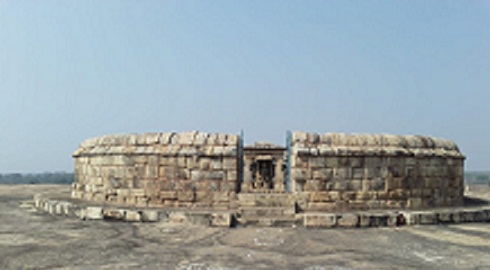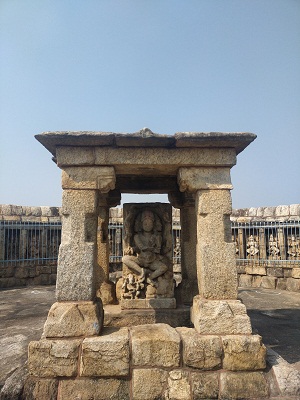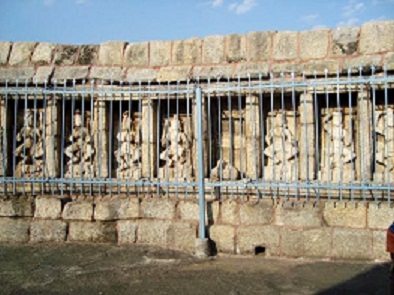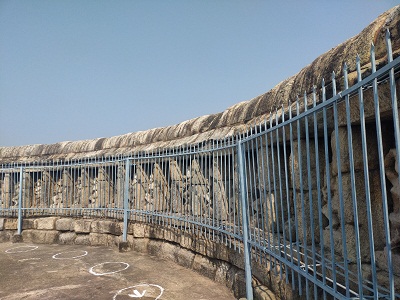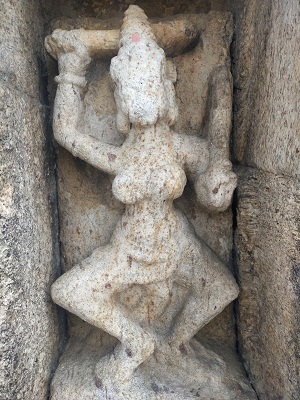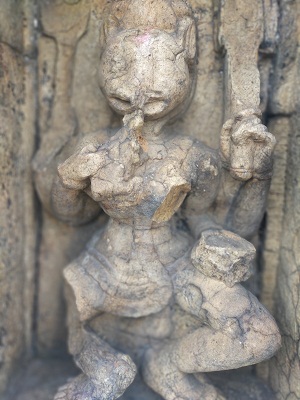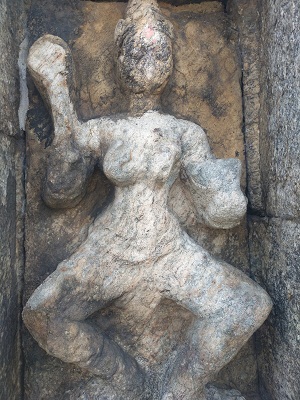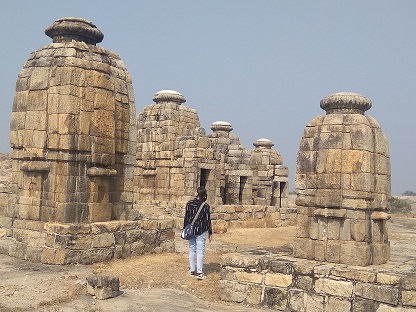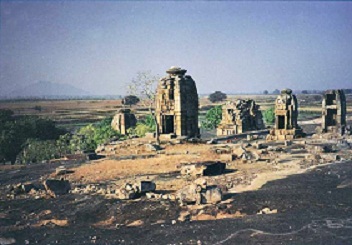When we talk about places of historical and tourist importance in Western Odisha, the first name that comes to our mind is the group of Ranipur Jharial temples located some 430 kilometers from the state capital Bhubaneswar and 105 kilometers from the district headquarters Balangir.
Perched on a rocky outcrop and nestled between the two villages, Ranipur and Jharial these stone temples built during the 9th and 10th century AD speak volumes for the glorious past that the area once enjoyed. While all the monuments which run to hundreds worth their merit for the visitors, the main attraction however is the 64 Yoginee temple, the hypethral structure.
And there is the majestic Indralath temple, one of the tallest brick temples of ancient India situated at a distance of merely a few hundred meters from the main site. Archeological Survey of India (ASI) has been entrusted with the maintenance of the group of temples that combine a cross-section of the religious faiths like Shaivaism, Vaishnaism, Buddhism, and Tantrism.
Though the place has so much potential as a tourist destination, it is largely unexplored, less traveled, and utterly neglected. Let me discuss in detail about everything that you must know about the Ranipur Jharial temples before you plan a visit to the site of ruins.
Post Contents
64 Yoginee temple
As you start trekking the rocky outcrop, the first glimpse that you catch is a circular structure made up of sandstones. This is one of the five 64 Yoginee temples found in India. While one more is located in Odisha in Hirapur village near Bhubaneswar, the other three are in Bhedaghat, Khajuraho, and Mitaoli in Madhya Pradesh.
Incidentally, Ranipur Jharial temple is the first to be discovered among all the 64 Yoginee temples in 1853 by Major-General John Campbell, a British Army Officer who served in the Ghoomsoor war in 1836-37.
In stark contrast with the traditional Hindu temples, you can see the 64 Yogini temples are not closed structures and they don’t have the ‘garbhagriha’ or the sanctum sanctorum where you have the presiding deity. Rather these are circular structures opened to the sky. Ranipur Jharial temple has a diameter of about 50 feet making it twice the size of Hirapur Yogini temple near Bhubaneswar.
The images that adorn the wall of the circular temple are poised as dancing. As it is an open temple extreme weather, particularly rain has taken a toll on the attributes of the images. The once finely carved images made of up sandstones have now withered and eroded.
14 of the Yogini images have animal heads like that of an elephant, cat, snake, or antelope. This clearly suggests a tantric overtone. Here we don’t have the matrikas or mother goddess images along with the Yoginees unlike in the case of the other temples. This is because Ranipur Jharial temple was built much earlier.
There are 64 niches in the temple including the one at the center housing the three-faced Shiva in a dancing pose. This is a roofed structure and the images are largely intact. Sadly, 13 of these 64 statues of Yoginees made up of sandstone are missing and some others have been damaged beyond recognition. The temple is now grilled to protect the monuments from vandals.
What is Yogini cult?
In the advent of 9th century AD, the tantra tradition evolved into an esoteric form and had the women practitioners who were called the yoginis. The yogini cult was an assimilation of a cross-section of faiths like Shaivism, Vashnaivsm, Buddhism, and Tantrism.
In this mysterious cult, more often than not the yoginis appear in a group of 64. There are however instances where they are found in groups of 42 and 81. They appear as goddesses, but human female adepts of tantra can emulate “and even embody” these deities, who can appear as mortal women, creating an ambiguous and blurred boundary between the human and the divine. Yoginis, divine or human, belong to clans; in Shaiva, among the most important are the clans of the Mothers (matris or matrikas).
Yoginis often having the forms of animals, represented in statuary as female figures with animal heads. Yoginis are associated with “actual shapeshifting” into female animals, and the ability to transform other people. That the tantric aspect of the yogini cult flourished at that time in the area is corroborated by the love tale of Sashisena and Ahimanikya in Sonepur not very far from Ranipur Jharial.
The story goes that the beauty of Ahimanikya charmed Jynanadei Maluni, one of the seven famous Tantric maidens of Sonepur. When he once went out alone to the bazaar, she induced him to come to her place where he was transformed into a lamb by dint of her esoteric power. She used to transform him into human form in the night to satisfy her sexual urge, while in the daytime, the unfortunate man remained as a lamb. However, displaying much courage and love for her man Sashisena won Ahimanikya back.
Till the late 20th century, Yoginis inspired a “deep sense of fear and awe” among “average” people in India, according to the scholar Vidya Dahelija. She writes that such fear may be ancient, as the “Brahmanda Purana” and the “Jnanarnava Tantra” both warn that transmitting secret knowledge to non-initiates will incur the curse of the Yoginis.
The Stone temples
As you explore further in the rocky outcrop of Ranipur-Jharial you come across the ruin of the stone temples apart from the 64 Yoginee temples that bear the testimony of a glorious bye-gone era.
The archeological site has now only 52 temples which once boasted at least 120 temples. Most of these temples are in a dilapidated state and need the immediate attention of archeologists. The stone temples are situated in clusters in various parts of the rocky outcrop and in various sizes.
The main characteristic of these temples is that they are made of sandstone like the 64 Yogini temple. None of the temples have any idols inside them. Some don’t have any openings at all which is the very basis of the tantric tradition related to the cult of the yogini during that time.
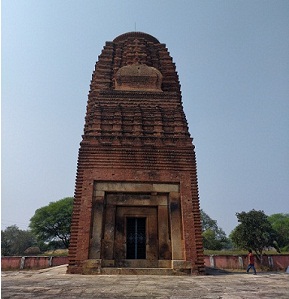
Indralath temple
At a few hundred meters distance from the rocky outcrop that houses the hypaethral 64 Yogini temple and the stone-temples is Indralath temple, a brick structure on a raised platform. The Temple is dedicated to Lord Shiva and it was believed that Indra first worshipped Lord Shiva here and erected a temple.
Though the time and builder of this temple is not precisely known, the accumulated artistic and architectural acumen of the post-Gupta age seemed to have had a significant contribution to the building activities here. At 60 feet, it was believed to be one of the tallest brick temples of that time.
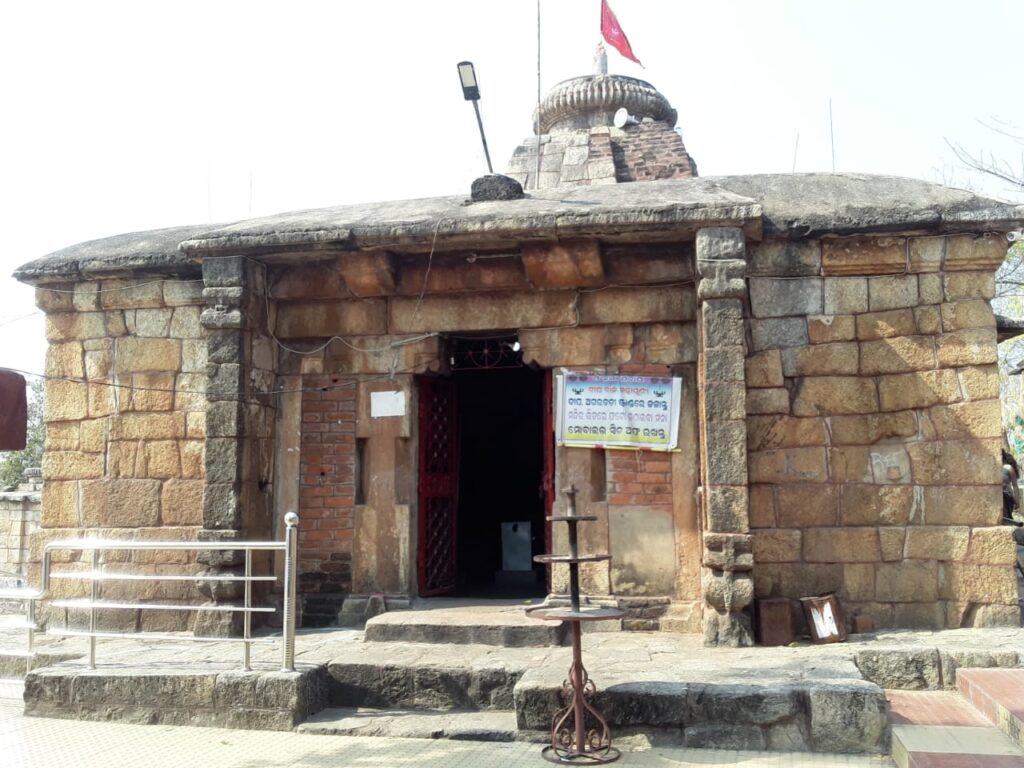
Someswar temple
Ranipur Jharial is also known as Soma tirtha as it is the abode of the Someswar Shiva. The Someswar temple right on the banks of a huge tank is relatively in a good state of preservation. This is also the only monument in the entire complex where we find some inscription that reads “Somasvami Siddhesvara Laxminama Chaturthanam”.
We also see an image of Durga, a Vrisabha, a Nagi, and a Dwarapala. On the lintel of the entrance to the garbhagriha Gajalaxmi is seen. On the entrance wall a deity possibly a Buddha or a Siddha in dhyana-mudra and in the sanctum proper a linga Someswar is seen. Maha Shivaratri, the annual festival dedicated to Lord Shiva is celebrated here with much fanfare.
Conclusion
As I have said in the beginning despite being a place of so much historical and tourist importance the ruins of Ranipur Jharial temple are not only largely unexplored and less traveled, but also utterly neglected.
During my recent visit to the site of Ranipur Jharial temples earlier this month I found the place in a complete mess. There is no protection of the huge complex and anyone can enter the site of ruin at any time and can do whatever they want.
I found many locals and tourists alike taking their vehicles right up to the top of the rocky outcrop where lies the ruins of Ranipur Jharial though there is an instruction not to take vehicles beyond a certain point. I also found picnickers thronging and littering the place.
Archeological Survey of India (ASI) is entrusted with conserving the site. Except for a couple of signboards of ASI that declare the monuments as protected monuments, there are no other activities of the ASI here.
I spoke to some locals and checked it out and to my utter dismay found that at least four persons including one local recruit posted here to look after the monuments. The locals complained that no one ever came to see the monuments. The guesthouse built to house the guests and tourists has now literally turned into a ghost house.
Fast facts
- Ranipur Jharial can be assessed by air, rail, and road from all parts of the country. The nearest airport is Raipur (International) about 210 kilometers away. The nearest railway station is Kantabanjhi in Balangir district about 20 kilometers from Ranipur Jharial.
- There are no eateries or accommodation facilities near the site of ruins, so take some food and enough water as you have to spend at least two to three hours to take a good look at all the monuments. You can find good budget hotels in Kantabanjhi for accommodation.
- Ranipur Jharial can be visited at any time of year, but plan your travel preferably in winter. It is ideal to visit from October to February when the weather is very pleasant. As you know Balangir is infamous for very harsh summers, so it is a strict no-no.
- If you have time you can explore nearby places and visit the Dwarasani temple in Sindhekela (10 Kms) and Tikhali dam project in Khariar (40 Kms).

